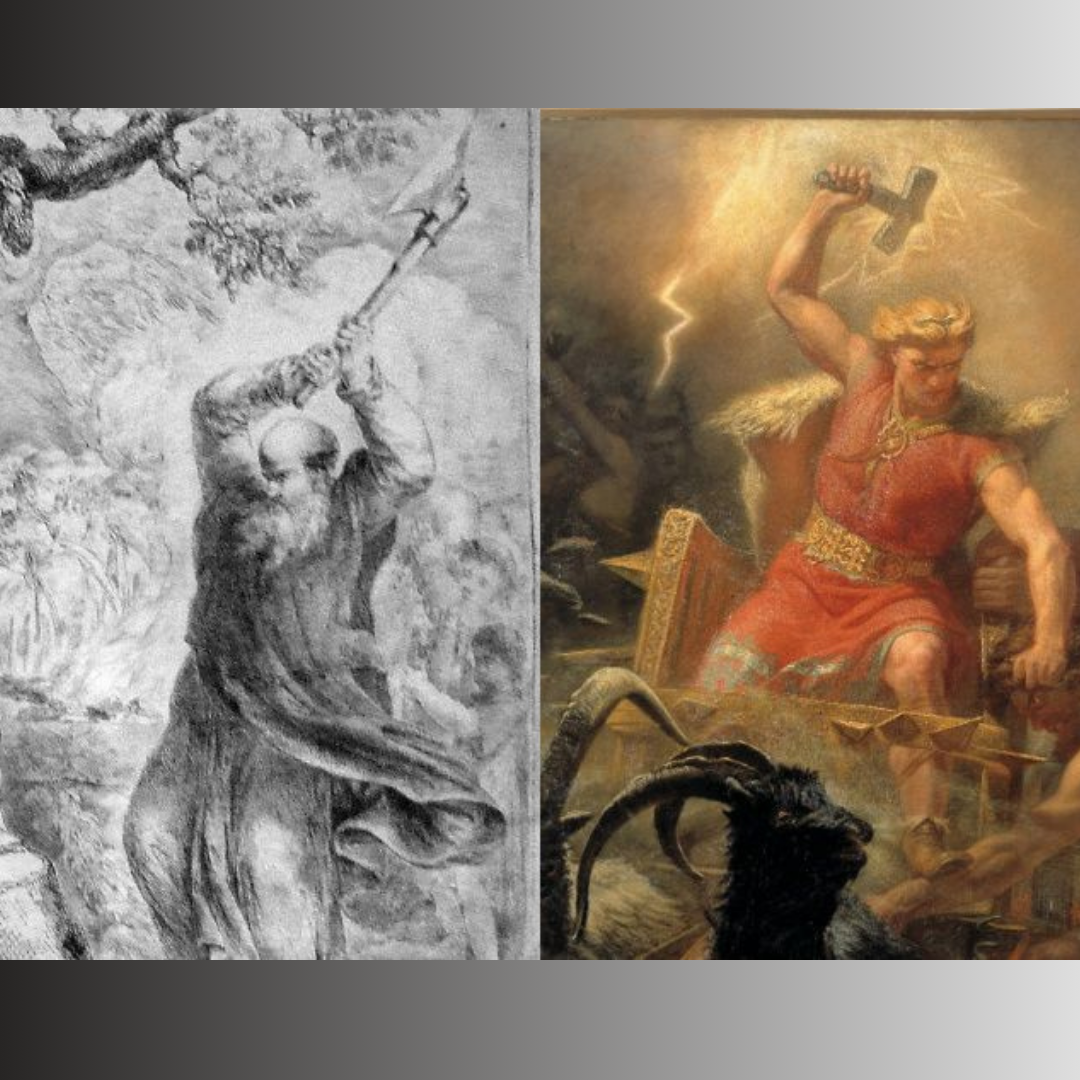When the average person thinks of a Catholic saint, I’d venture to guess that it’s not a fearless, axe-wielding, hammer-breaking, oak-crushing, converter of heathens that comes to mind. And yet, that’s exactly the kind of guy Saint Boniface was.
Born around 680 in England, Boniface entered a Benedictine monastery before being commissioned by the pope to evangelize modern-day Germany, first as a priest, and eventually as a bishop.
Under the protection of Charles Martel, Boniface traveled through all of Germany, restrengthening regions that had already been introduced to Christianity and bringing the light of Christ to those that hadn’t.
Boniface, “with his tireless activity, his gift for organization, and his adaptable, friendly, yet firm character,” found a great amount of success in his travels, said Pope Benedict XVI in 2009.
Here Boniface is described (albeit dramatized for storytelling) by Henry Van Dyke in "The First Christmas Tree" (1897):
“What a man he was! Fair and slight, but straight as a spear and strong as an oaken staff. His face was still young; the smooth skin was bronzed by wind and sun. His gray eyes, clean and kind, flashed like fire when he spoke of his adventures, and of the evil deeds of the false priests with whom he contended.” (1)
Around the year 723, Boniface was traveling with a small party in the region of Lower Hesse. He knew of a community of heathens near Geismar who, in the middle of winter, would make a human sacrifice (a child, typically) to the thunder-god Thor (yes, THAT Thor) at the base of their sacred oak tree, the “Thunder Oak”.
Boniface, in part from advice from a brother bishop, wished to destroy the Thunder Oak to not only save the life of the human sacrifice, but also to show the heathens that he would not be struck down by lightning at the hands of Thor.
As the story goes, Boniface and his companions, reaching the village on Christmas Eve, arrived at the place of the sacrifice in time enough to interrupt it.
With his bishops’ staff (crozier) in hand, Boniface approached the pagan crowd, who had surrounded the base of the Thunder Oak, saying to his group, “Here is the Thunder Oak, and here the cross of Christ shall break the hammer of the false god, Thor.”
With a small child laid out for the sacrifice, the executioner raised his hammer high. But on the downswing, Boniface extended his crozier to block the blow, miraculously breaking the great stone hammer and saving the child’s life.
Afterward, Boniface is said to have proclaimed to the people:
“Hearken, sons of the forest! No blood shall flow this night save that which pity has drawn from a mother’s breast. For this is the birth-night of the Christ, the son of the Almighty, the Savior of mankind. Fairer is He than Baldur the Beautiful, greater than Odin the Wise, kinder than Freya the Good. Since He has come sacrifice is ended. The dark, Thor, on whom you have vainly called, is dead. Deep in the shades of Niffelheim he is lost forever. And now on this Christ-night you shall begin to live. This blood-tree shall darken your land no more. In the name of the Lord, I will destroy it.” (2)
Boniface picked up an axe nearby and, as legend has it, took one mighty swing at the oak when a great gust of wind arose through the forest and felled the tree, roots and all. It lie on the forest floor, broken in four pieces. Though afterwards Boniface had a chapel built from the wood, our story takes us to what stood immediately beyond the ruins of the mighty tree.
The “Apostle of Germany” continued to preach to the astounded Germanic peoples, who were in disbelief that this slayer of Thor’s Thunder Oak had not been struck down by their god. Boniface looked beyond where the oak lay, pointing to a small, unassuming fir tree, saying:
“This little tree, a young child of the forest, shall be your holy tree tonight. It is the wood of peace… It is the sign of an endless life, for its leaves are ever green. See how it points upward to heaven. Let this be called the tree of the Christ-child; gather about it, not in the wild wood, but in your own homes; there it will shelter no deeds of blood, but loving gifts and rites of kindness.” (3)
And so, the Germans began a new tradition that night, one that stretches to the present day. By bringing a fir into their homes, decorating it with candles and ornaments, and celebrating the birth of a Savior, the Apostle of Germany and his flock gave us what we now know as the Christmas tree.
Originally posted on Mountain Catholic.


